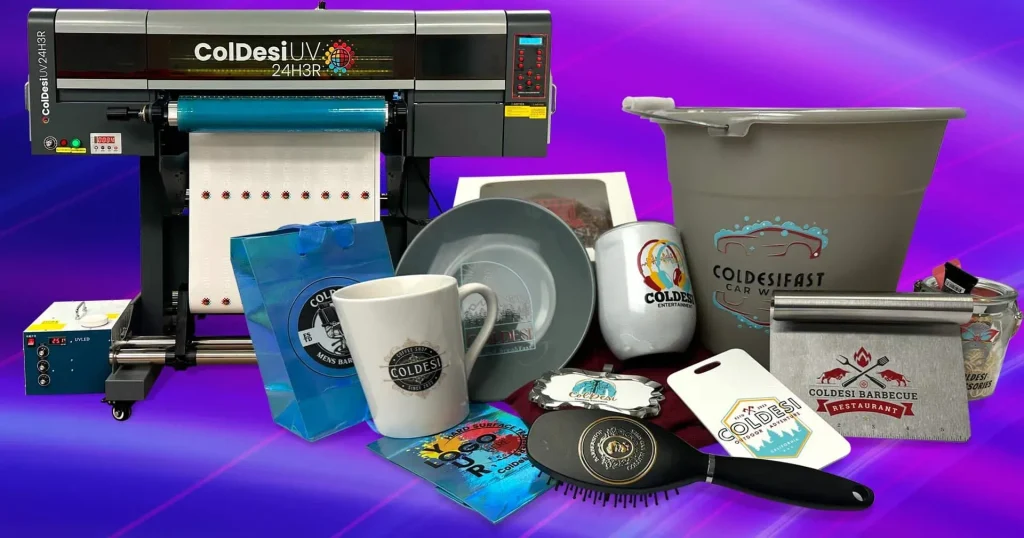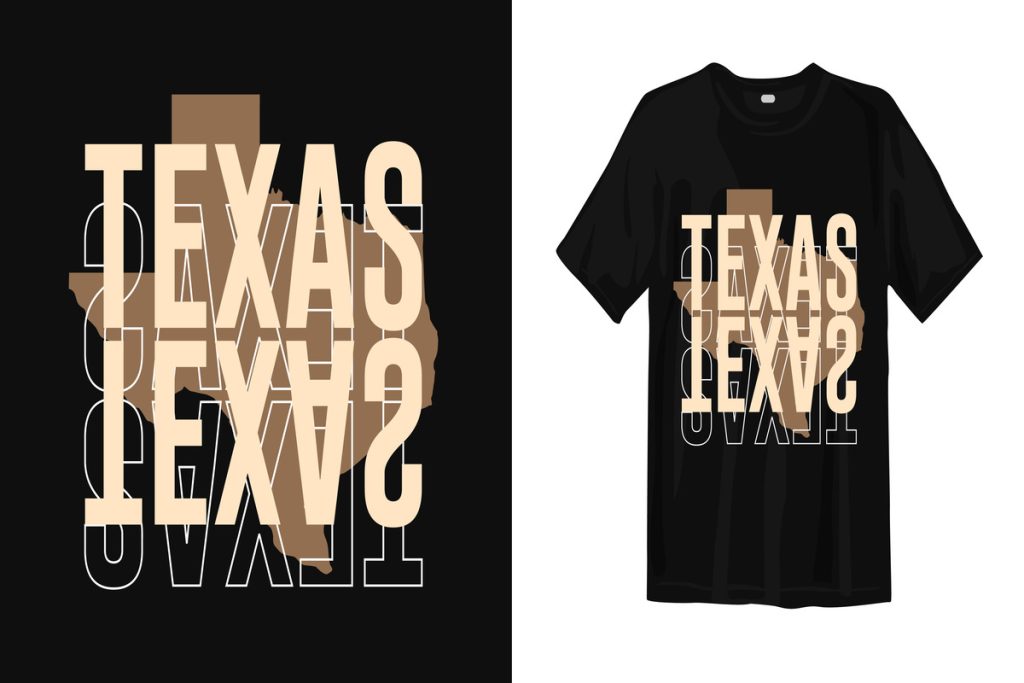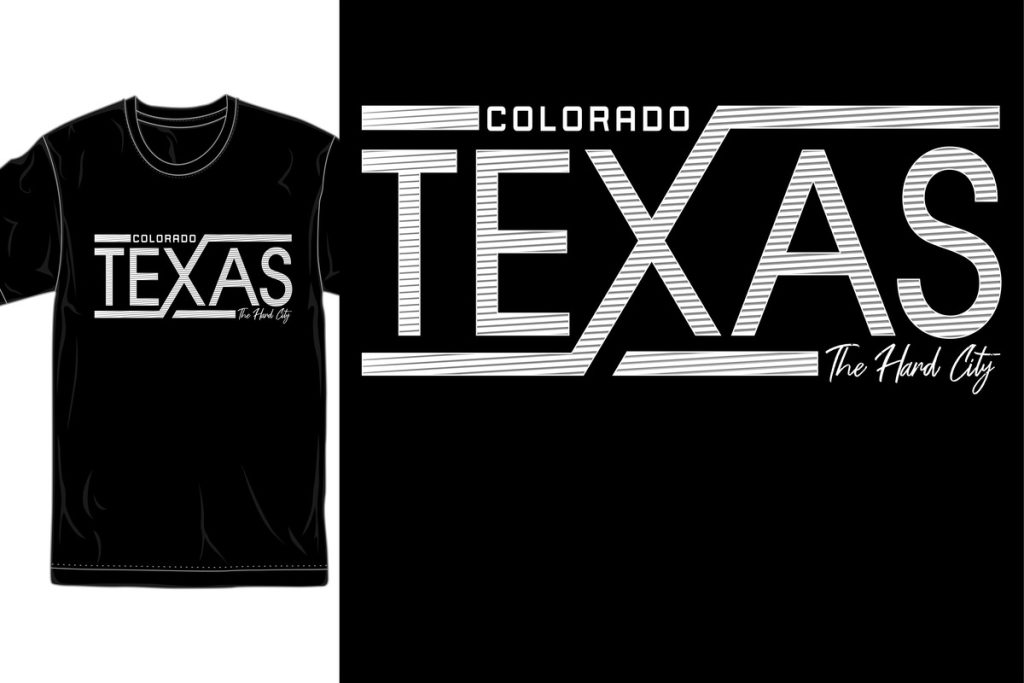In the dynamic landscape of digital printing, **UV DTF printing** (Direct to Film) is making waves as a cutting-edge technology that merges traditional UV printing processes with innovative film transfer methods. This unique printing solution allows for vibrant, high-quality images that can adhere to a wide variety of materials, from textiles to rigid surfaces, offering businesses custom printing solutions that meet diverse needs. With the added benefits of durability and environmental consciousness, UV DTF printing demonstrates a commitment to sustainable printing methods. This technique stands apart from conventional direct to film printing by providing faster curing times and superior detail, perfect for modern branding and design requirements. As we delve deeper into the world of UV printing applications, you’ll discover how this technology is transforming the printing industry and shaping creative possibilities.
Introduced as a revolutionary approach, **UV DTF printing** employs ultraviolet (UV) light to cure innovative inks on specially coated films, thus enabling a rapid and effective transfer onto various substrates. Often described as direct to film printing, this method capitalizes on the benefits of UV printing technology while catering to an expanding range of applications across industries. Businesses exploring this method can enjoy versatile custom printing solutions that are not only eye-catching but also resilient against everyday wear and environmental factors. Emphasizing eco-friendly practices, UV DTF represents a new wave of sustainable printing methods that align with consumers’ growing demand for responsible sourcing and manufacturing. As we investigate further, you’ll learn how this printing process can enhance product impact while promoting brand sustainability.
Understanding the Basics of UV DTF Printing
UV DTF printing, or ultraviolet direct-to-film printing, is an innovative method of producing prints that stand out for their quality and durability. This technique utilizes UV-curable inks, which are instantly cured by UV light during the printing process. This process not only quickens drying times but also enables intricate designs that can be applied on a variety of substrates, including textiles, plastics, and metals. The result is a vibrant and detailed print that adheres well to surfaces without needing extensive pre-treatment, making it a preferred choice among manufacturers and designers alike.
This technology has gained significant traction in various sectors, particularly in producing promotional merchandise and fashion labels. By enabling direct printing on a special transfer film, UV DTF technology provides an efficient solution for those looking to create custom designs with minimal environmental impact. As the demand for unique and durable prints rises, UV DTF printing emerges as a powerful option for businesses aiming to differentiate their products in a competitive landscape.
The Advantages of UV Printing Technology
One of the core benefits of UV printing technology is its exceptional durability, which sets it apart from several traditional printing methods. Brands using UV DTF printing can produce weather-resistant and long-lasting designs that withstand varying environmental conditions without fading, cracking, or peeling. This durability is particularly advantageous for outdoor applications, such as signage and branding materials, where exposure to sunlight and precipitation can compromise print quality.
Moreover, UV printing technology supports eco-friendly practices by employing inks that are less harmful to the environment. The process generates less waste compared to solvent-based inks and requires less rinsing post-production. By shifting towards sustainable printing methods, companies not only enhance their corporate responsibility but also cater to the growing consumer preference for environmentally-conscious products.
Exploring UV DTF Printing Applications
UV DTF printing is revolutionizing various industries by offering a wide array of applications tailored to meet distinct customer needs. In the fashion industry, for instance, designers can utilize this technology to impart brilliant and bespoke prints onto clothing items, facilitating creative expression through unique graphics. This capability extends beyond just garments, finding its way into home decor, where people can customize wall art, furniture, and a range of decorative items.
Similarly, the promotional merchandise sector is tapping into the benefits of UV DTF printing to produce vibrant items such as tote bags, water bottles, and branded gifts. The capability of UV DTF to consistently deliver high-quality prints allows brands to create memorable marketing tools that draw attention and foster customer engagement.
Sustainability in UV DTF Printing
As the printing industry increasingly shifts towards sustainable practices, UV DTF printing stands out as a viable option that aligns with this trend. Many UV inks are designed to be eco-friendly, providing a reduced environmental footprint without sacrificing quality. By minimizing the use of harmful solvents and waste, businesses can operate more sustainably while still delivering vibrant color and detail.
Furthermore, the UV curing process employed in DTF technology ensures faster production times with less energy consumption. This combination of efficiency and environmental responsibility makes UV DTF printing an attractive option for companies committed to sustainable printing methods. In doing so, they can help reduce their overall impact on the planet while meeting consumer demands for eco-conscious products.
Comparing UV DTF Printing with Other Techniques
When evaluating UV DTF printing against traditional printing techniques, it’s clear that it offers numerous advantages that can significantly enhance production efficiency. Unlike conventional DTF printing, which often involves multiple preparation stages and longer drying times, UV DTF simplifies the process. The ability to print directly onto a transfer film that cures instantly creates a seamless workflow, allowing for quicker turnaround times without compromising on the detail and vibrancy of the print.
In contrast to traditional UV printing that might be limited to specific surfaces or textures, UV DTF expands possibilities by allowing printing on a broader range of substrates. This flexibility opens up new avenues for customization, making it suitable for businesses in varied fields—from fashion to industrial applications—looking to explore innovative printing solutions.
The Future of UV DTF Printing
Looking ahead, the future of UV DTF printing appears promising, with forecasts indicating significant growth and adoption across various sectors. As more businesses recognize the benefits of this technology, advancements in ink formulations and printing machinery are expected to further enhance its capabilities. A broader range of applications is likely to emerge, making UV DTF printing an integral part of the digital landscape.
By 2025, experts predict that UV DTF printing will transition from a niche market to a mainstream printing practice, driven by consumer demands for high-quality and sustainable products. In this evolving environment, those who invest in UV DTF printing will not only meet current trends but will also position themselves strategically for future opportunities in the dynamic world of printing.
Frequently Asked Questions
What makes UV DTF printing different from traditional printing methods?
UV DTF printing, or Direct to Film printing, distinguishes itself from traditional methods by utilizing UV-curable inks that dry quickly under UV light, allowing for high-quality, detailed images on various substrates. Unlike solvent or water-based inks, UV inks offer durability against fading and weathering, making them ideal for outdoor applications.
What are the primary applications of UV DTF printing technology?
The applications of UV DTF printing technology are diverse, spanning industries such as fashion, home decor, and promotional merchandise. Designers use UV DTF to produce vibrant clothing prints, while businesses utilize it for creating customized promotional items like tote bags and mugs. Its versatility allows it to adhere to various materials, including textiles, plastics, and metals.
How does UV DTF printing support sustainable printing methods?
UV DTF printing supports sustainable printing methods by using eco-friendly UV inks that minimize waste during the curing process. This technology aligns with the growing demand for environmentally conscious practices in the printing industry, allowing businesses to enhance their product offerings without compromising the environment.
What are the benefits of using UV printing technology in custom printing solutions?
Using UV printing technology in custom printing solutions provides several benefits, including enhanced durability, quick drying times, and the ability to print on a wide range of substrates. This technology allows for high-quality prints that resist fading and cracking, making it perfect for both indoor and outdoor applications.
Can UV DTF printing be used on challenging surfaces and materials?
Yes, UV DTF printing can effectively print on challenging surfaces and materials without the need for pre-treatment. This flexibility allows businesses to expand their product offerings by printing on various substrates such as wood, metal, and plastics, opening up new opportunities in different markets.
What is the future outlook for UV DTF printing in the digital printing industry?
The future outlook for UV DTF printing in the digital printing industry is promising. Experts predict significant growth in demand, with this technology becoming mainstream by 2025. Continued advancements in ink technology and machinery will likely improve efficiency, broaden applications, and enhance the quality of prints.
| Key Features of UV DTF Printing | Description | Benefits | Applications | ||
|---|---|---|---|---|---|
| 1. Versatility | Handles a wide range of materials including textiles, plastics, wood, and metal. | Ideal for diverse applications such as fashion, home decor, and promotional items. | |||
| 2. Durability | Creates weather-resistant prints, less prone to fading and cracking. | Perfect for outdoor usage and long-lasting merchandise. | |||
| 3. Sustainability | Utilizes eco-friendly inks and efficient curing processes. | Contributes to environmental conservation, appealing to eco-conscious businesses. | |||
Summary
UV DTF printing represents a groundbreaking advancement in the world of digital printing. This innovative technique merges the advantages of UV curing with Direct to Film technology, offering exceptional quality and versatility for a myriad of applications. Its unique ability to print on various substrates without pre-treatment, coupled with durability and eco-friendly practices, positions UV DTF printing as a frontrunner in the industry. From fashion to promotional merchandise, businesses leveraging this technology can create striking designs that not only stand out but also meet growing demands for sustainability in production. As UV DTF printing continues to evolve, it is set to reshape the digital printing landscape, making it an essential consideration for companies aiming to enhance their offerings.



